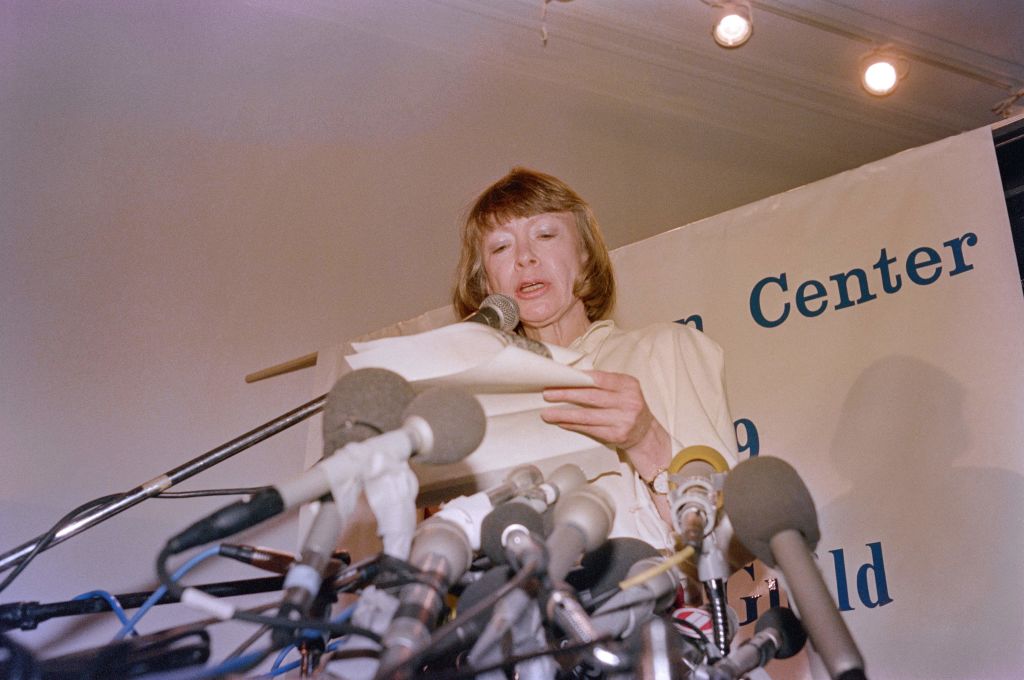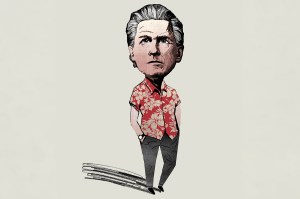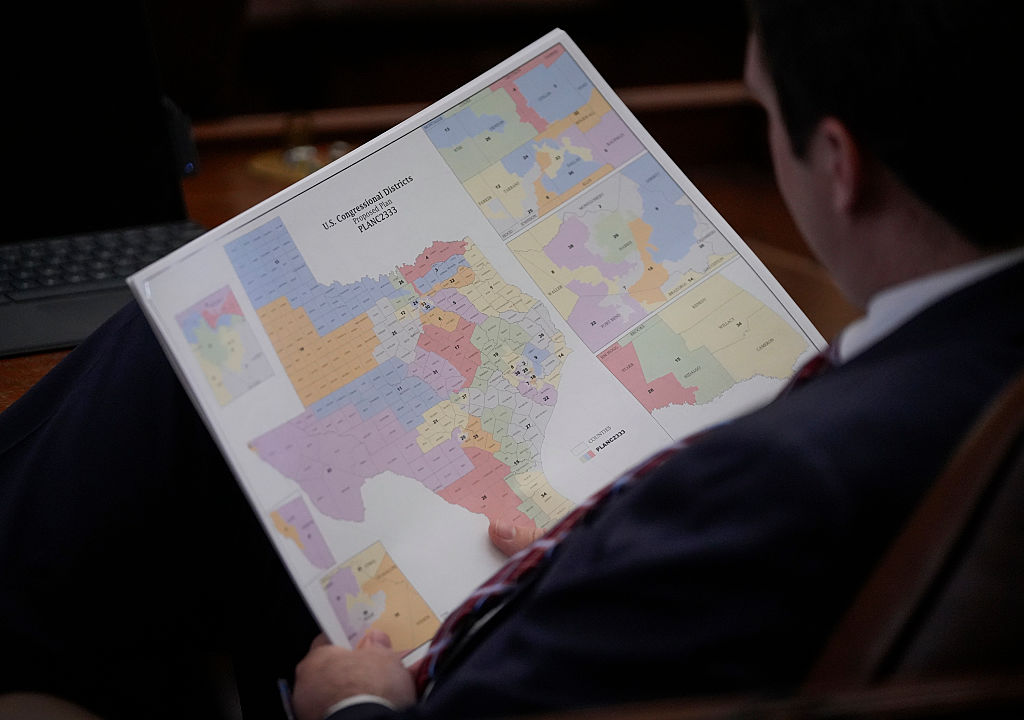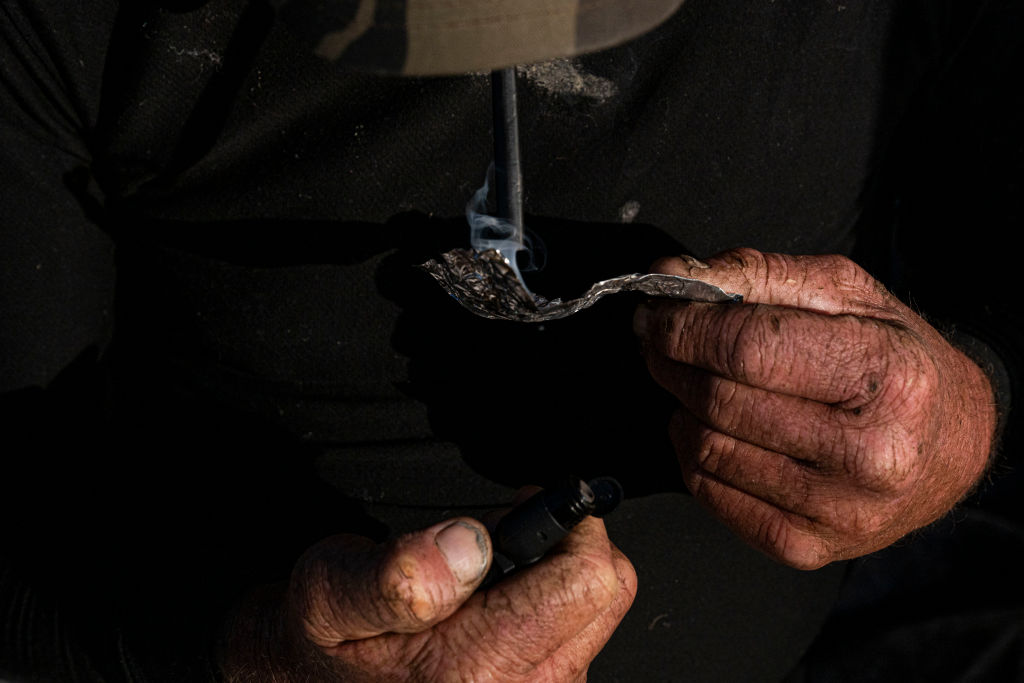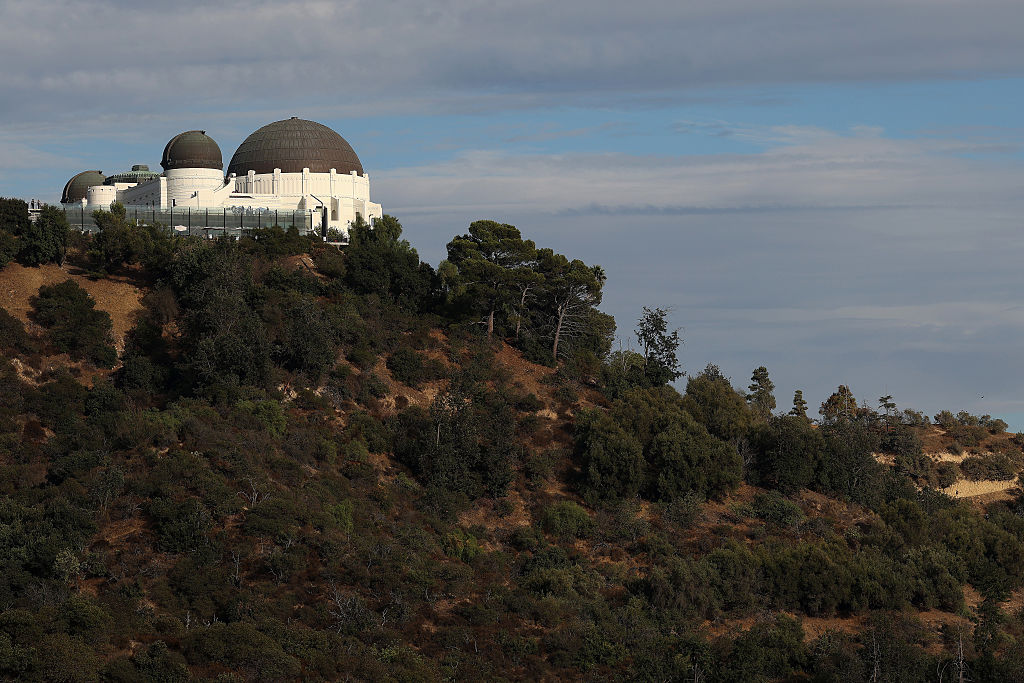On December 23, 2021, I left the Hollywood Roosevelt and walked down North Orange Drive to turn right and face Sunset Boulevard. It was dark when I passed the entrance to the Chateau Marmont. When I finally crossed the street to arrive at Book Soup, the “Bookseller To The Great & Infamous,” I turned to the cashier and asked if they had copies of Play It As It Lays by Joan Didion. He huffed, “Uh, yeah, we’re sold out.”
Joan Didion had died earlier that day in Manhattan due to complications of Parkinson’s Disease.
If a memorial trudge to a bookstore was out of respect to one of the most important prose stylists of the twentieth century, Joan Didion’s estate sale auction on November 16, 2022 — held by Stair galleries — was a canonization of Didion into the pantheon of American gods.
What relic of Didion’s would you buy? Sunglasses? Julian Wasser’s iconic photo of Didion with her Corvette Sting Ray? Her private book collections? Her empty notebooks?
That photo of Didion with her Corvette Sting Ray was in lot twelve and estimated to go for between $1,200 and $3,000, but fifteen minutes and thirty-two bids later, it sold for a whopping $26,000.
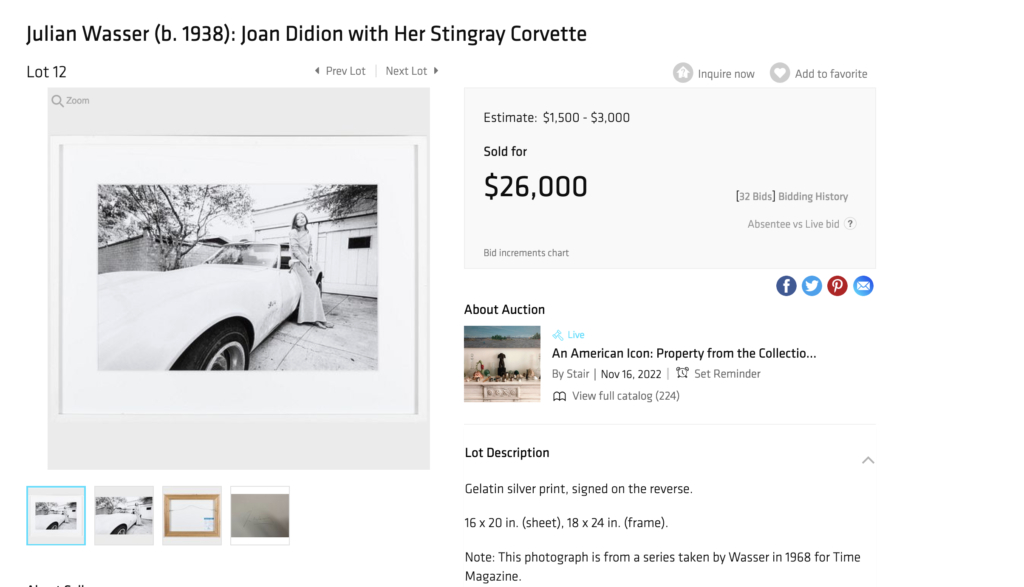
You might be tempted to think this was the highlight of the auction and that Didion’s place as both a writer and style icon culminates in this photo. Perhaps the highest bidder wanted to possess the writer as many had tried and failed before him — even Warren Beatty had tried in the height of his own considerable allure. But that was lot twelve and forty-five minutes earlier in the auction, in lot five, Didion’s pair of Celine Faux Tortoiseshell Sunglasses sold for $27,000, which was about $26,000 more than their estimated value.
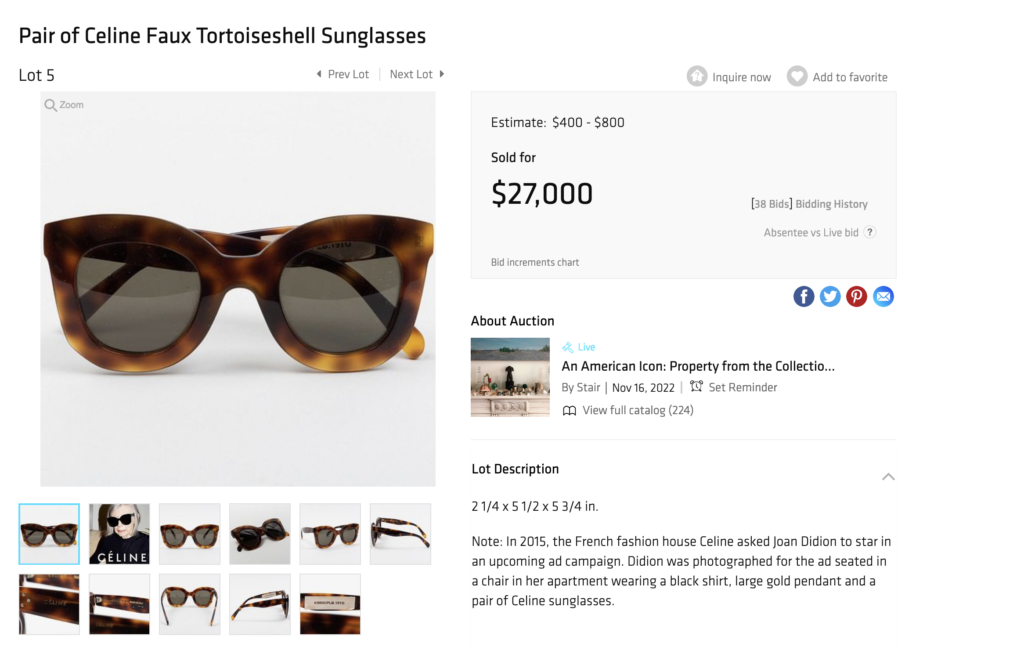
Who would wear them now?
Lot four, in Didion’s estate auction, contained her portrait by Leslie Johnson in 1977, the one featured on the back cover of A Book of Common Prayer, and it sold for $110,000. This was the priciest item sold in the estate auction, which lasted about eight hours.
Didion was not an island, no matter how remote she could seem in her prose. She and her husband, John Gregory Dunne, would host dinner parties to celebrities and friends. She was noted for her Southwestern cooking, though never seen eating, and her cocktails, which she was rarely seen without. Lot 149, her collection of Le Creuset Enameled Cast-Iron Dutch Ovens and Sauté Pans sold for $8,000 and, in lot 165, her pair of Cut Glass Decanters sold for $5,500.
If you’ve never read Joan Didion, her personal book collection might have surprised you, filled with what some feminist scholars labeled “the Twentieth Century Misogynists.” A collection of Philip Roth (lot 144, sold for $4,250), her collection of Ernest Hemingway (lot 137, sold for $13,000), and Norman Mailer and John Updike ($3,250, $4000) all took up space on her bookshelf — Joyce Carol Oates as well (lot 139, sold for $6,500).
Perhaps the most interesting writers in the Didion Library were Graham Greene (lot 142, sold for $4,000) and George Orwell (lot 138, sold for $4,750). You don’t see a lot of influence from British writers in Didion’s prose. In fact, her critics in the UK, especially of her novels, found her too American. But maybe it was Orwell’s idea of the writer having the “power of facing,” to not look away from dark and the brutal, but instead to record it, which is where Orwell and Didion meet.
What powers do these relics contain? Or, more importantly, what powers do these highest bidders hope to absorb? Does Didion’s IBM Wheelwriter 5 Typewriter (lot seventy-three, sold for $6,000) contain that addictive meter, captured somehow in the keys, and waiting to be released by its next user? Will her Random House Unabridged Dictionary (lot seventy-seven, $11,000) flip to the right page, revealing the perfect simple word, for that deep, terse sentence you’ve been staring at for hours? Maybe you just like to have a set of scissors lying around that used to be held by those slender devious fingers (Group of Writing Ephemera, lot seventy-four, $4,250).
To be able to see the sale prices of the auction, I had to verify my identity with a credit card and become an active participant. I knew after lot one, when a small collection of Joan Didion’s books from her personal library sold for $15,000 that I was unlikely to purchase anything without being required to sell my car or mid-priced watch. I would only have her words in books I’d purchased in various bookstores around the world, which didn’t seem too bad at all…
…but wait, her blank notebooks, lot fourteen, estimated to go for $200. Perhaps I could try bidding up to $1,000 and have some Moleskins stamped from the personal collection of Joan Didion. What did I have to lose?
Lot fourteen, the blank notebooks, sold for $9,000. Not to me, of course.



